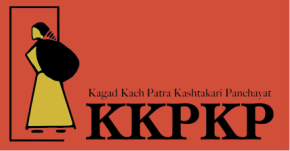Eliminating Child LaborSince 2001 waste-picking has been included among the list of hazardous occupations prohibited for children under the Child Labor (Prohibition and Regulation) Act, 1986. In spite of that, the concerned authorities failed to implement the law because, as they put it, “waste picking is self-employment.” In 2010, we conducted a campaign with a coffee shop to raise awareness about the issue. We also conducted a study with Sarva Shikshan Abhiyan to identify the children who are picking waste and their reasons for working in these hazardous conditions. The absolute number of children in this work has dropped. There has been a change in the nature of children in waste picking—in 1995, almost all the children picking waste were children of waste pickers themselves. That has changed through some of our efforts. This reinforces our belief that changing the work conditions of parents betters the lives of the children. After several years of coercing the government, waste picking is finally listed among the occupations prohibited for children. Officials from the Labor Department shrugged their shoulders saying that no one can be prosecuted since there is no employer. We decided to implement the order ourselves. It was not easy. We would go around in groups to warn children and parents. A few times, we even took the sacks full of the scrap that the children had collected. A few times we took police women with us as well. Initially, the children were scared, but that eventually died out. They knew we would not let them get hurt. Parents’ of these children had mixed reactions. Some had excuses, “She only collected scrap today, otherwise she goes to school everyday. She just came to deliver my lunch.” Others abused instead, “So are you going to feed my children? Will you give her a job if she goes to college? Where will I find a husband for her, if she becomes a graduate? Nobody will marry her. Shall I send her to your house then?” |
Child Wastepickers Study 2007
In 2007, a rapid survey was conducted across three days to check and interview children who collect waste and are engaged in this activity either full time or part time. A questionnaire was prepared to get the information about the demographics of the children engaged in waste picking, understand their work and life situation. Volunteers from different colleges and other organisations collected this information.
This study revealed that:
KKPKP wrote to the Education Officer, PMC and Commissioner, to start a class there under the SSA. We also put pressure on the labor department to stop children from entering the land fill site. In November 2008, the PMC sent out notices and put up boards banning child labor at the garbage depot. In December 2008, the labor department conducted a raid.
KKPKP started a class at the garbage depot in space provided by the PMC. This is a bridge class so that children can be enrolled in mainstream schools in the coming academic year. We also started a systematic campaign to eradicate child labor in the waste picking industry by developing a poster for bringing awareness among citizens about the issue. We also made use of the Press as a medium of creating awareness among citizens.
A helpline service was made available for a period of 3 months where children engaged in waste picking and citizens could call and access help from the organization. The same number was publicized actively through the press reports and poster displays.
This study revealed that:
- 366 children from 330 families were found waste picking in 13 selected pockets of Pune
- 72% were boys and 28 % were girls. This is in contrast to KKPKP’s study of 1995 where girl child laborers were more.
- Most of the child waste pickers were in the age group of 10 to 14 years but there was a small number of children below 7 years of age
- Only 33 were children of members of the KKPKP. None of them were children of KKPKP members in door to door collection. This is a significant finding as it confirms that better working conditions for the parent’s results in lower child labor.
- 90% of the children reported that their parents were in domestic work, construction labor, sundry work and other informal sector occupations.
- Most of the children belong to Hindu Matang community
- 27% also currently go to school. 48 % have been to school at some time. Most dropped out between Stds IV - VII.
- 26.7% of children surveyed had migrated to Pune within the last 5 years , most of the children migrated with their parents and live with relatives. .
- Although most of the children were found working in containers along the roads, there was a concentration of 46 children working at the garbage depot at Uruli Devachi.
KKPKP wrote to the Education Officer, PMC and Commissioner, to start a class there under the SSA. We also put pressure on the labor department to stop children from entering the land fill site. In November 2008, the PMC sent out notices and put up boards banning child labor at the garbage depot. In December 2008, the labor department conducted a raid.
KKPKP started a class at the garbage depot in space provided by the PMC. This is a bridge class so that children can be enrolled in mainstream schools in the coming academic year. We also started a systematic campaign to eradicate child labor in the waste picking industry by developing a poster for bringing awareness among citizens about the issue. We also made use of the Press as a medium of creating awareness among citizens.
A helpline service was made available for a period of 3 months where children engaged in waste picking and citizens could call and access help from the organization. The same number was publicized actively through the press reports and poster displays.
